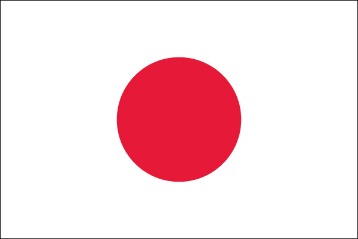
Sources differ on the degree to which the usage of the Hinomaru flag was restricted; some use the time period “banned;” nevertheless, whereas the unique restrictions had been severe, they didn’t quantity to an outright ban. Textbooks throughout this era also had the Hinomaru printed with varied slogans expressing devotion to the Emperor and the nation. Expressions of patriotism, similar to displaying the flag or worshiping the Emperor day by day, have been all part of being a “good Japanese.”
- The workplaces of the Ministry of Foreign Affairs also hoist the flag at half-staff when a funeral is carried out for a foreign nation’s head of state.
- The flag is often seen on the National High School Baseball Championship, because the Asahi Shimbun is a major sponsor of the tournament.
- Chinese media is state-controlled and Beijing is currently working to improve ties with Tokyo.
- A distinct feature of these flags is that they use a palette of colors not normally found in flags, together with orange, purple, aquamarine and brown.
- The flag was a dark blue subject with a big chrysanthemum and seven-pointed purple star within the centre.
In contrast, they’re hardly ever seen on private buildings, although some folks and firms like displaying the flag on public holidays. As it is not uncommon in many international locations, the flag is lowered to half-employees (半旗, Han-ki) during periods of nationwide mourning, as was the case when the Showa-Emperor handed away in 1989. After Japan’s defeat in World War II and the subsequent occupation by US forces, strict guidelines had been utilized to patriotic symbols such because the Hinomaru. In order to hoist the flag, permission from the US navy command had to be given first. With Japan’s new constitution coming into effect in 1949, a number of restriction on the flag had been lifted. Two years later, all restrictions had been abolished and anyone could raise or display the flag without needing permission.
Purchase Japanese National Flag
In the twelfth-century work, The Tale of the Heike, it was written that completely different samurai carried drawings of the sun on their fans. One legend related to the nationwide flag is attributed to the Buddhist priest Nichiren. Supposedly, during a thirteenth-century Mongolian invasion of Japan, Nichiren gave a solar banner to the shōgun to carry into battle.
The period got here to a bloody end when two opposing clans, the Taira and Minamoto Clan, fought over control of Japan. The Taira, which had dominated Japanese politics in the course of the Heian Period, waged struggle towards the Minamoto under a red flag with gold and silver moon circles. This flag, referred to as Nishiki no Mihata (錦の御旗, “honourable brocade flag”) was also the symbol of the Imperial courtroom through the Heian Period. The Minamoto, in opposition to both the Taira and their flag, selected a pure white flag. The warfare finally concluded with the Minamoto assuming control of Japan and establishing the Kamakura Shogunate. Later in history, successive Shoguns of Genji, leader of the Minamoto, used the flag of Shirachikamaru (白地赤丸, “red circle on white background”) as a logo of nationwide unity.
Society: Authorities
Like prefectural flags, most of them are with a bicolour geometric extremely stylized symbol, usually incorporating Japanese characters. Firefighters in Tokyo holding the Japanese national flag during a ceremony. The Japan Air Self-Defense Force , established independently in 1952, has solely the plain sun disc as its emblem. This is the only branch of service with an emblem that does not invoke the rayed Imperial Standard. However, the department does have an ensign to fly on bases and during parades. The Japan Air Self-Defense Force flag was first adopted in 1955 after the JASDF was created in 1954.

開催中の平和資料館収蔵品展から「日の丸寄せ書き」について [Museum collections from the exhibition “Group flag efforts” being held for peace] [archived ; Retrieved ]. A graduation ceremony in Hokkaido Prefecture with both the Hinomaru and the flag of Hokkaido Prefecture. The offices of the Ministry of Foreign Affairs additionally hoist the flag at half-staff when a funeral is performed for a foreign nation’s head of state.
Too few survivors of Japan’s wartime atrocities remain alive to fill the Olympic stadium and explain the that means of this symbol. The flag’s origins are unknown however the hinomaru flag dates to at least the Warring States Period of Japan’s historical past, in the fifteenth and sixteenth centuries. It officially turned the national flag only in 1999, partly due the the legacy of the War.
The order requires school academics to respect each symbols or threat dropping their jobs. As an indication of protest, colleges refused to display the Hinomaru at school graduations and some dad and mom ripped down the flag. Teachers have unsuccessfully introduced felony complaints towards Tokyo Governor Shintarō Ishihara and senior officials for ordering teachers to honor the Hinomaru and Kimigayo. After earlier opposition, the Japan Teachers Union accepts using each the flag and anthem; the smaller All Japan Teachers and Staffs Union still opposes both symbols and their use inside the varsity system. Negative perceptions of the national flag exist in former colonies of Japan as well as within Japan itself, similar to in Okinawa.